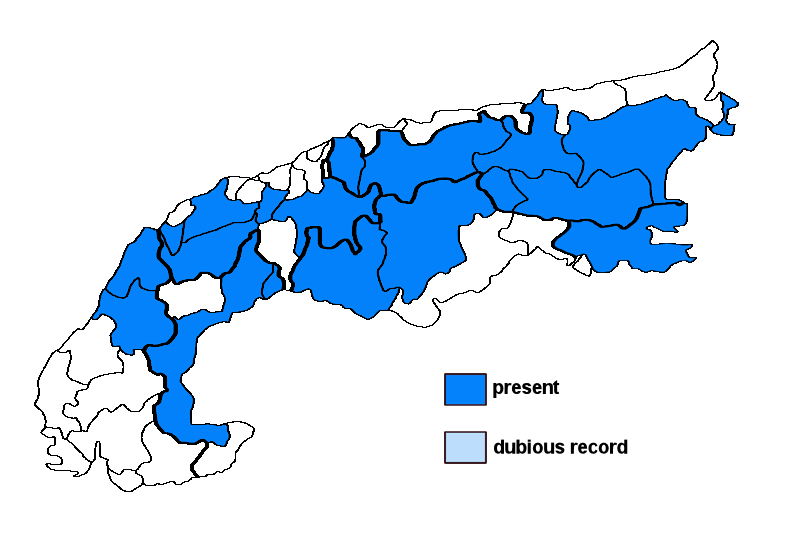Miriquidica leucophaea (Rabenh.) Hertel & Rambold
Syn.: Biatora consanguinea Anzi, Biatora leucophaea Rabenh., Lecidea aggregatula Nyl., Lecidea confertula Stirt., Lecidea discolorella Nyl., Lecidea karaensis Lynge, Lecidea leucophaea (Rabenh.) Nyl., Lecidea mesotropa Nyl., Lecidea nodulosa (Körb.) H. Olivier, Lecidea sporotea Stirt., Lecidella nodulosa Körb., Psora confertula (Stirt.) Stirt.
Lichenised.
Substrate: siliceous rocks, metal-rich siliceous rocks
Altitudinal range: from the montane belt (potential vegetation: deciduous forests dominated by Fagus sylvatica and closed coniferous forests with Picea abies) to the alpine belt (potential vegetation: treeless Alpine grasslands and tundras, to the lower limit of perennial snow and the equilibrium line of glaciers)
Note: a polymorphic species of metal-rich rocks, starting the life-cycle on yellow Rhizocarpon-species, more hygrophytic than M. griseoatra, being most frequent in sheltered situations, such as on faces with a late snow cover in upland areas.
Austria: Vorarlberg; Tirol; Salzburg; Kärnten; Steiermark; Burgenland; Switzerland: Bern; Graubünden; Uri; Vaud; Valais; France: Savoie; Haute-Savoie; Italy: Trentino Alto Adige; Lombardia; Piemonte; Slovenia: Alpine and Pre-Alpine Slovenia;





